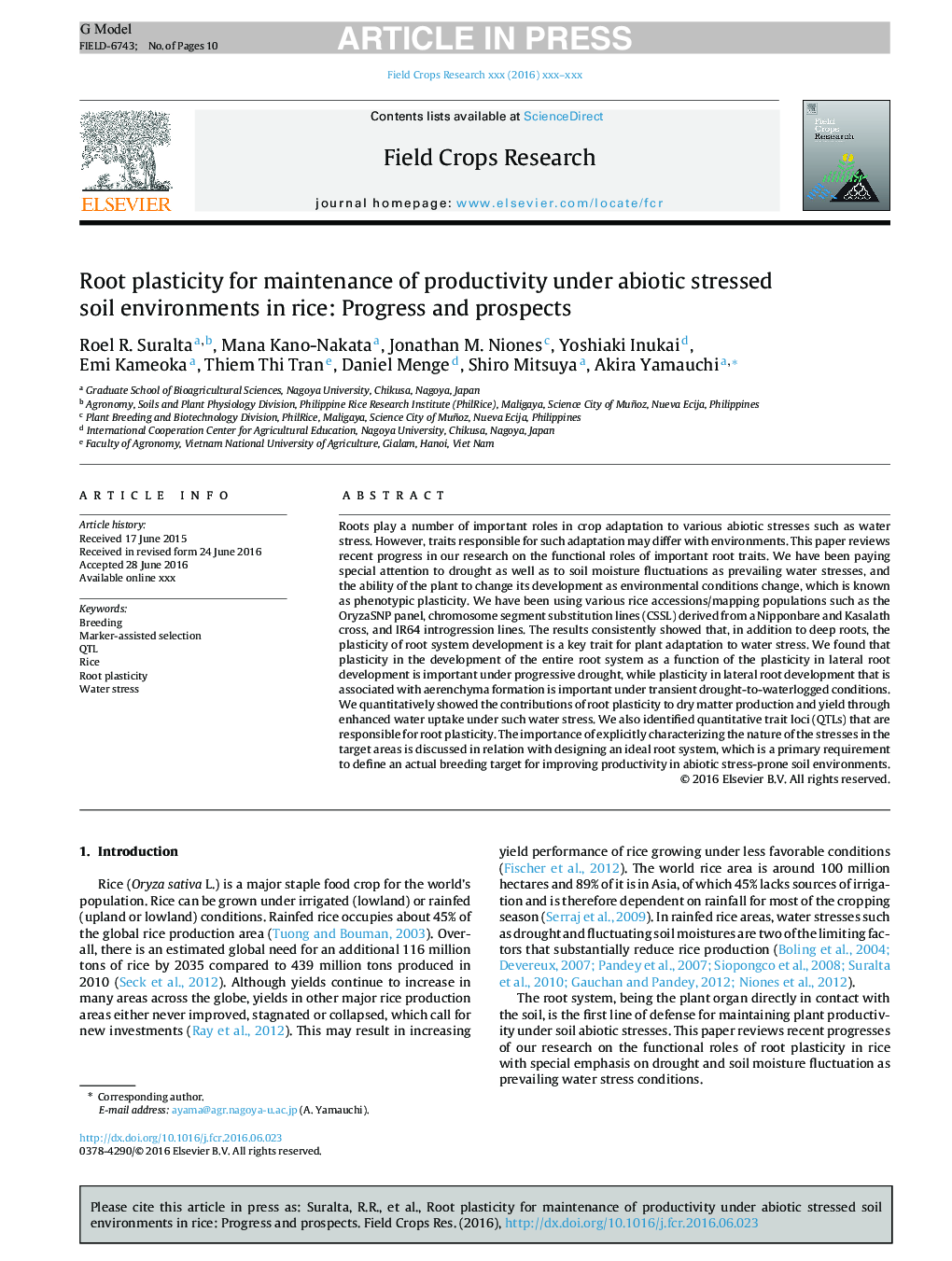| Article ID | Journal | Published Year | Pages | File Type |
|---|---|---|---|---|
| 8879292 | Field Crops Research | 2018 | 10 Pages |
Abstract
Roots play a number of important roles in crop adaptation to various abiotic stresses such as water stress. However, traits responsible for such adaptation may differ with environments. This paper reviews recent progress in our research on the functional roles of important root traits. We have been paying special attention to drought as well as to soil moisture fluctuations as prevailing water stresses, and the ability of the plant to change its development as environmental conditions change, which is known as phenotypic plasticity. We have been using various rice accessions/mapping populations such as the OryzaSNP panel, chromosome segment substitution lines (CSSL) derived from a Nipponbare and Kasalath cross, and IR64 introgression lines. The results consistently showed that, in addition to deep roots, the plasticity of root system development is a key trait for plant adaptation to water stress. We found that plasticity in the development of the entire root system as a function of the plasticity in lateral root development is important under progressive drought, while plasticity in lateral root development that is associated with aerenchyma formation is important under transient drought-to-waterlogged conditions. We quantitatively showed the contributions of root plasticity to dry matter production and yield through enhanced water uptake under such water stress. We also identified quantitative trait loci (QTLs) that are responsible for root plasticity. The importance of explicitly characterizing the nature of the stresses in the target areas is discussed in relation with designing an ideal root system, which is a primary requirement to define an actual breeding target for improving productivity in abiotic stress-prone soil environments.
Related Topics
Life Sciences
Agricultural and Biological Sciences
Agronomy and Crop Science
Authors
Roel R. Suralta, Mana Kano-Nakata, Jonathan M. Niones, Yoshiaki Inukai, Emi Kameoka, Thiem Thi Tran, Daniel Menge, Shiro Mitsuya, Akira Yamauchi,
